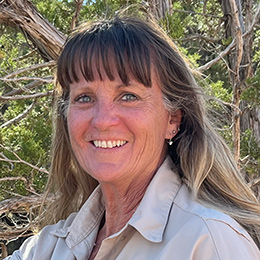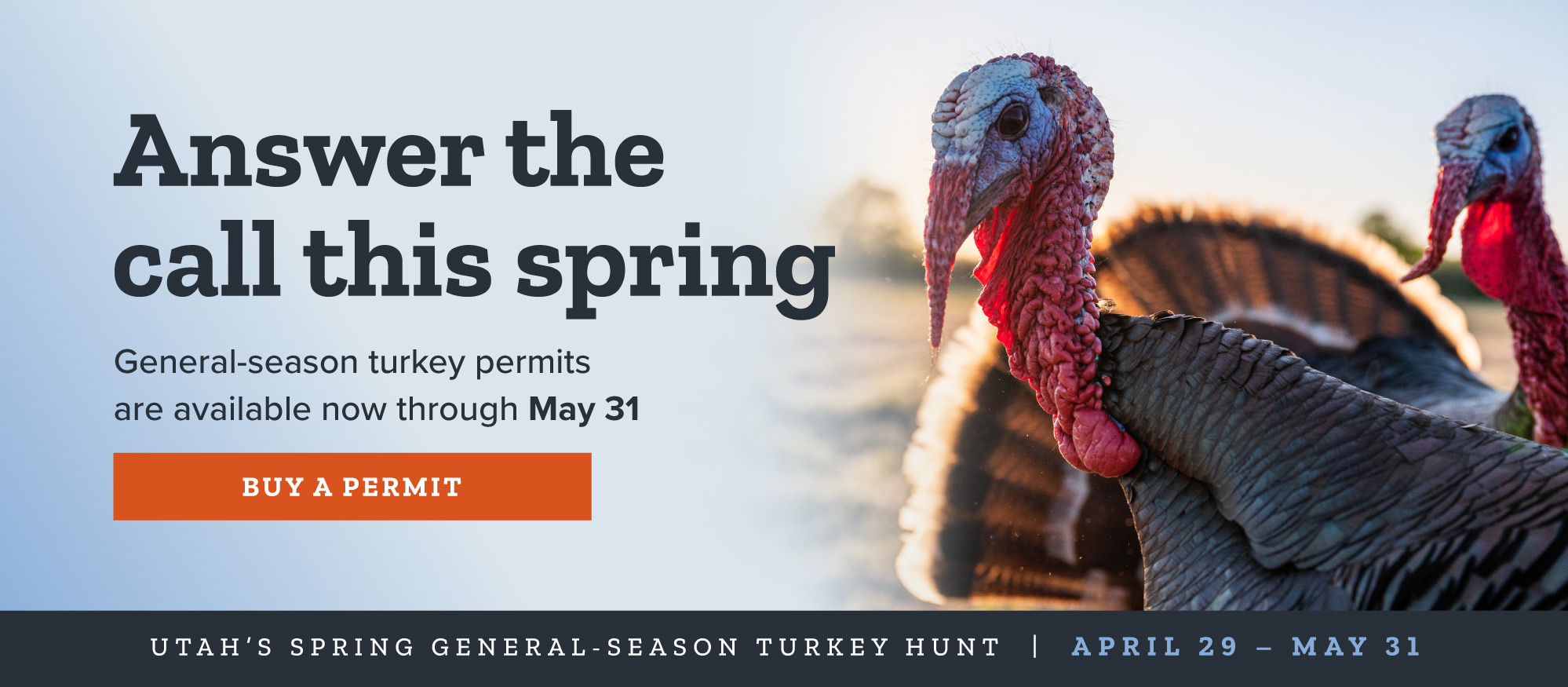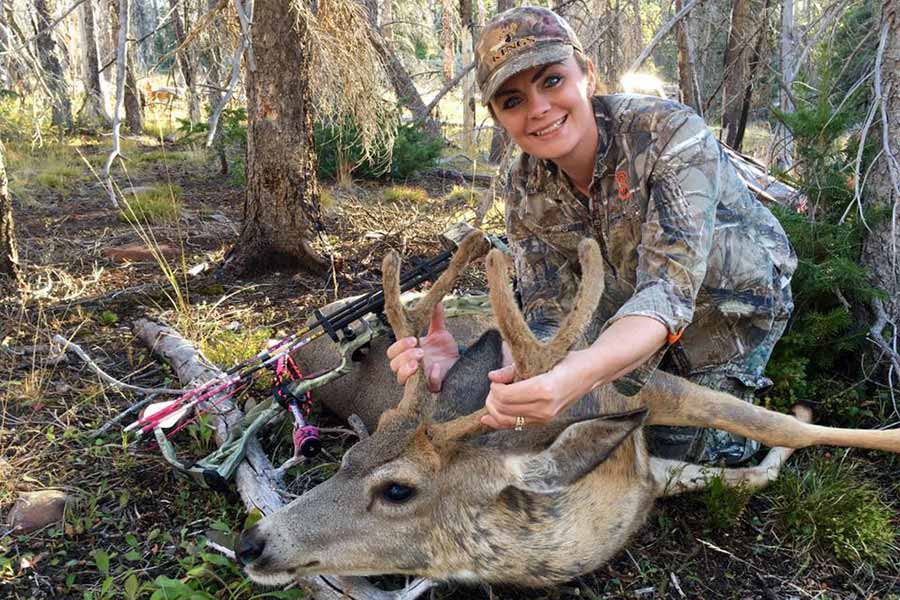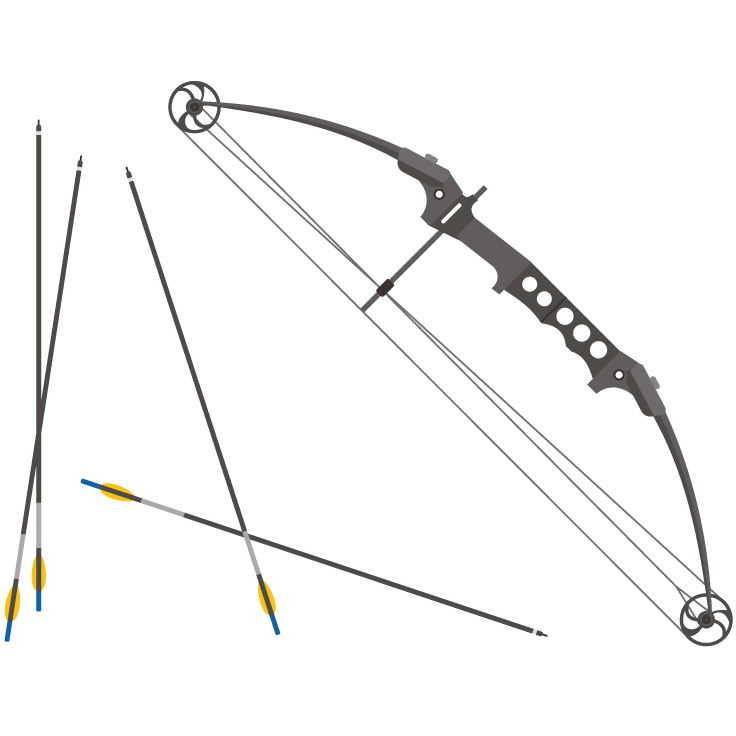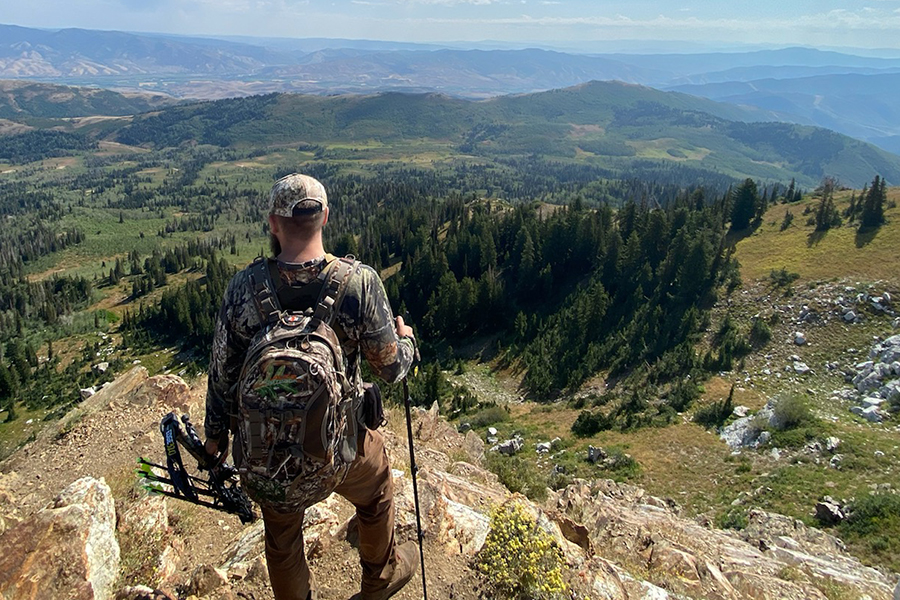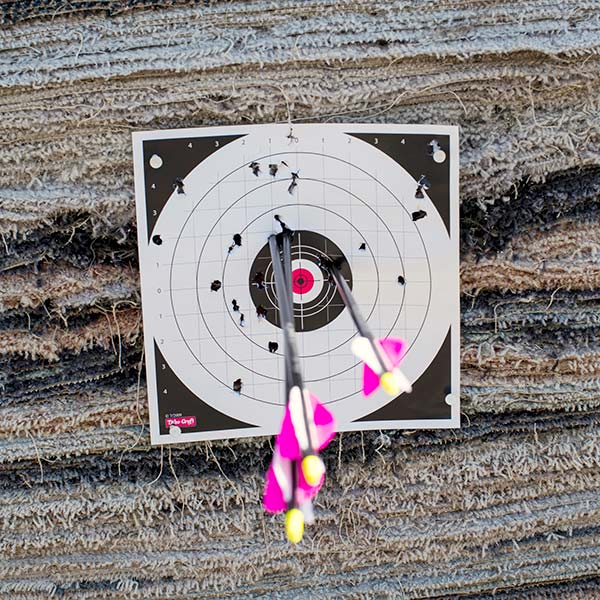Learn to hunt: archery
Tips for taking on the challenge of bowhunting
RaLynne Takeda
DWR Hunter Education Program Manager
It's archery season for many of Utah's big game hunts, and many people who have never hunted with archery equipment — or have never hunted at all — are inspired to become bowhunters this time of year.
Although you may not have an opportunity to hunt during the archery season this year, it's the perfect time to get started learning a new skill, and dedicate the time and energy it takes to become a proficient archery hunter. Maybe this time next year you'll be pulling back a bowstring and harvesting your first buck!
As the Utah Division of Wildlife Resources Hunter Education Program Manager, I've had the opportunity to teach and mentor archers of all skill levels and ages for almost 40 years. Here are some frequently asked questions about getting started archery hunting.
Question: What do you enjoy most about archery hunting?
Answer: The challenge. The close proximity to the animal you need to have for a clean shot.
Question: What basic equipment is needed for someone getting started archery hunting?
Answer: A quality bow, arrows specifically matched to the bow and you. Proper footwear is also crucial: You'll spend a lot of time hiking and good boots are a game changer.
Question: What should someone look for when buying good, entry-level equipment? Does that vary from person to person (size, etc.)?
Answer: Choosing good equipment will vary depending on each person and what they are planning to hunt. It comes down to personal preference, and sometimes advice from family or friends.
I recommend visiting your local archery pro shop to try out some equipment before you commit to buying. The archery shop staff can help you determine your draw length — that's the distance you pull back the string for comfortable and proper shooting form — and what draw weight will work best for you. They can also walk you through the process of obtaining the perfect bow for you and your needs.
Question: How much does good entry-level equipment cost, and what requirements should I keep in mind?
Answer: Entry-level bows will start between $400–$800. Arrows run from $10–$25 each. Accessories — such as arm guards/bracers, finger tabs and quivers — can add up quickly on top of the bow purchase. Arrows used for hunting are razor sharp, so investing in a good quiver to store them in is a priority for both your safety and for keeping your arrows close at hand when hunting.
If you are purchasing archery equipment intended for big game hunting, keep in mind that there are specific requirements outlined in the annual Utah Big Game Field Regulations Guidebook. For example, bows used for hunting must have a minimum draw weight of 30 pounds, in order to create enough force to humanely harvest an animal. Also, there are rules for the minimum length of arrows used for hunting and the type of arrowheads allowed.
Question: What skills do I need to develop to become a good archery hunter, and how and where can I practice?
Answer: Becoming a successful archer requires both mental and physical determination. Aerobic endurance, balance, coordination, good reaction time, motivation, self-confidence, mental strength, developing the proper skills and techniques, agility, flexibility, strength and power are some of the things needed for archery.
On average, it takes over two months of frequent practice to learn how to properly shoot a bow. That's usually how long it takes for archers to learn the correct techniques and develop consistent form. After you learn correct techniques, you will start to refine your skills and become a more consistent shooter through repetition. There are archery ranges around the state — including DWR-run Lee Kay and Cache Valley public shooting ranges — and many archery shops have a small range. Spend time all year practicing, not just a week or two before the hunt. Join an archery league near you and have fun!
Question: What requirements do I need to meet in order to hunt in Utah? Are there additional bowhunting certifications needed to draw an archery permit?
Answer: To hunt in Utah you need to:
- Complete a Hunter Education course if you were born after Dec. 31, 1965.
- Have a valid Utah hunting or combination (hunting and fishing) license.
- Apply for and purchase a permit — also called a tag — allowing you to hunt a specific species and sex of animal. Permits are issued for particular areas (called hunting units), during specified dates and using allowable equipment types (called hunt seasons). You can find more information about the big game permit application process in the annual Utah Big Game Application Guidebook, and more about obtaining turkey permits in the Utah Upland Game and Turkey Guidebook.
- Bow hunters planning to hunt the extended-season big game hunts must complete an online Archery Ethics Course covering the special considerations of hunting in these high-use areas. The Archery Ethics Course must be completed each year, and you are required to carry the course certificate of completion with you while you're hunting.
We do offer Bowhunter Education courses in Utah, but it is not a requirement to purchase an archery tag. If you are looking for more information and tips on bowhunting, the Bowhunter Education course is a great resource, as it's a comprehensive course for a national bowhunter certification required to archery hunt in Idaho, Montana, Alaska and several other states. There are options for an entirely instructor-led course or an online course followed by an in-person field day.
Question: What species can you hunt with archery tackle in Utah? What's a good "first hunt"?
Answer: All big game species — deer, elk, moose, bighorn sheep, bison, bear, cougar, etc. — are huntable with archery equipment. Turkeys are also a good species for bowhunting. I think the best first hunt is probably mule deer. It provides a very affordable and enjoyable hunt.
New hunters need to make sure they know the regulations for hunting with archery equipment, which are covered in the annual guidebooks:
- Utah Upland Game & Turkey Guidebook
- Utah Big Game Field Regulations Guidebook
- Utah Black Bear Guidebook
- Utah Cougar Guidebook
Question: How would a new archery hunter find training and/or a mentor?
Answer: Utah has many archery clubs and bowhunting organizations that beginners can join. This is a great way to meet many new friends to assist with learning the techniques for bowhunting. The DWR also hosts beginner archery clinics and seminars each year. (Subscribe to our email newsletter or follow us on social media to get alerts for upcoming events near you.)
Question: How do you care for your equipment to keep it in good condition?
Answer: I would recommend following the manufacturer's guidelines for equipment care for the bow you purchase. Keeping your bow in good working order is important not only to protect your investment in the equipment, but for your own safety. Inspect your bow regularly to check for damage or wear, and keep your bow's cams, strings and cables clean. Make sure to use string wax and lubricants that are recommended for your bow, and store your archery equipment in a cool, dry area.
Question: What's the single most important piece of advice you have for a new archery hunter?
Answer: Be safe, have fun, and practice, practice, practice.
Question: Anything else you think is important for someone who’s just getting started?
Answer: Research the different equipment options, and think about what your needs are to make sure you are getting the best bow to suit you. Go to archery pro shops, they usually have equipment you can try before you buy. Don't be pressured into buying something that doesn't feel right. Make it work for you.
Learn more:
- Find out more about hunting in Utah here.
- Many Utah schools participate in the National Archery in the Schools Program, a great way for youth to learn about archery techniques and practice their shooting skills.
- The Youth Hunter Education Challenge is a fun annual competition where you can meet other hunters of all ages and skill levels. (Despite the name, YHEC is also open to adults!)
- WILD podcast episode: DWR shooting sports programs
